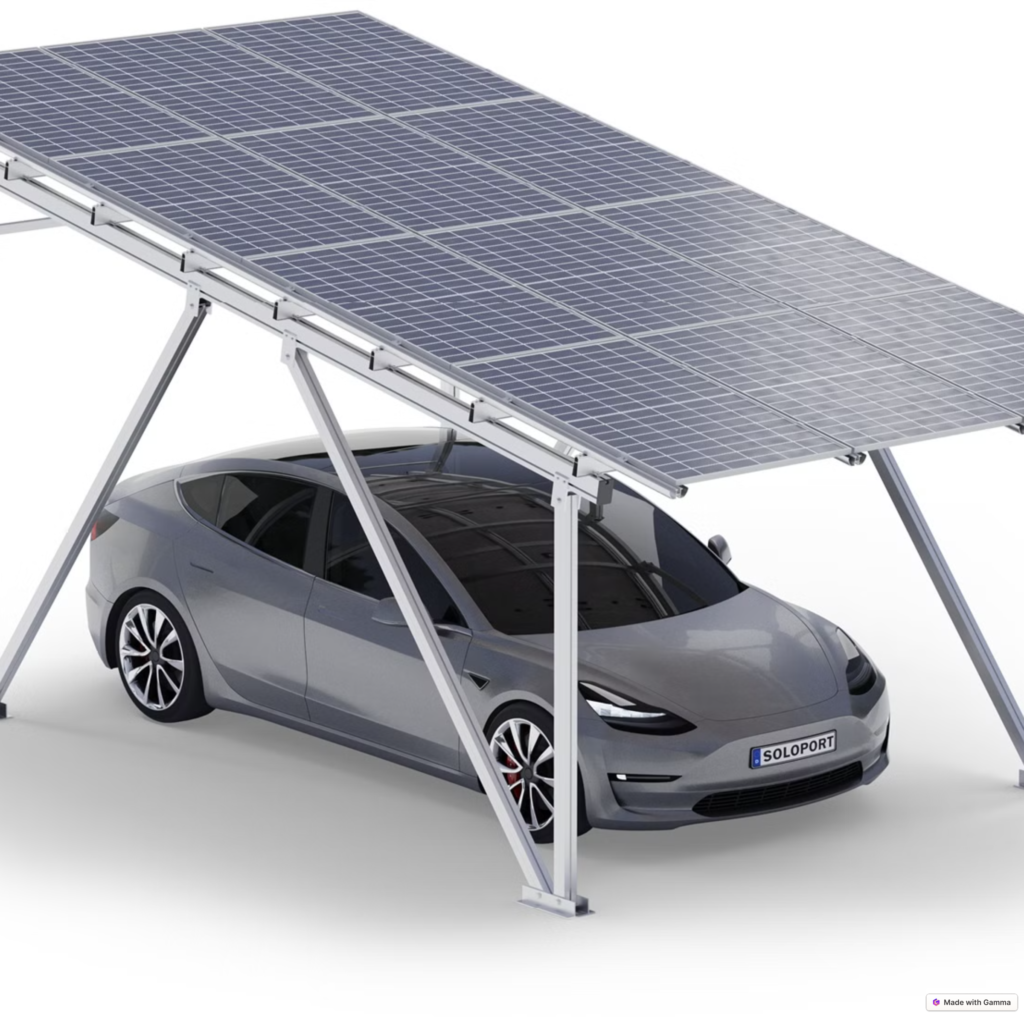When setting the array spacing of solar panels, the following key points should be noted:
First, avoid obstructions
Winter Solstice principle:
The array spacing should be large enough to ensure that the front photovoltaic panels do not block the back ones between 9 a.m. and 3 p.m. on the winter solstice. This is because on the winter solstice, the solar altitude Angle is at its lowest. At this time, if the array spacing is not set properly, it is most likely to cause occlusion.
Year-round unobstructed requirement:
According to the “Code for Design of Photovoltaic Power Stations (GB 50797-2012)”, it is necessary to ensure that there is no mutual obstruction in the front, back, left and right during the period from 9:00 to 15:00 (local true solar time) throughout the year. This means that the setting of the array spacing needs to meet the sunlight demand at different time periods throughout the year.
Second, maximize the utilization rate of light energy
The importance of reasonable spacing:
The setting of the array spacing should ensure that each photovoltaic panel receives the maximum amount of solar radiation. If the spacing is too large, it will waste land resources. If the spacing is too small, it will cause the rear photovoltaic panels to be blocked, reducing the power generation efficiency.
Adjust according to the array direction:
The setting of array spacing also needs to be considered based on the array direction (such as north-south, east-west, and diagonal) and the local duration of sunlight. For north-south arrays, the spacing can be appropriately smaller. For diagonal or east-west arrays, the spacing may need to be appropriately increased.
Third, calculation and reference
Calculation formula:
The array spacing D can be calculated based on the height H of the array/occlusion in front, the solar altitude Angle α, and the solar azimuth Angle γ. The formula is: D=
Tan alpha.
H ⋅ cos gamma
. Among them, the solar altitude Angle α and the solar azimuth Angle γ can be calculated based on the local latitude, declination Angle and time Angle.
Shadow multiplier table
Since the above formula calculation is rather complex, you can refer to the shadow multiple table to simplify the calculation. The shadow multiplier (D/H) is only related to the latitude where the project site is located. By referring to the shadow multiplier table, the required array spacing can be quickly calculated.
Fourth, practical engineering considerations
Unbalance coefficient
Based on the calculated array spacing, it is recommended to add an imbalance coefficient of 0.3 to 0.5 meters to deal with possible errors or changes in actual engineering.
Topography and climatic factors:
When installing solar panels on sloping land or complex terrain, it is necessary to calculate and shorten the array spacing or increase the retreat spacing based on the slope to ensure that shading is reduced. At the same time, local climatic conditions such as rainy days, strong winds or dry climate should also be taken into account, and the array spacing should be appropriately adjusted.
Cost-effectiveness
When setting the array spacing, land costs and infrastructure investment also need to be taken into consideration. While avoiding occlusion and maximizing the utilization rate of light energy, the construction cost should be reduced as much as possible.
Fifth, Summary and suggestions
Take everything into consideration:
The setting of array spacing requires comprehensive consideration of multiple factors such as avoiding occlusion, maximizing the utilization rate of light energy, calculation and reference, and practical engineering considerations.
Flexible adjustment
In actual engineering, the array spacing should be flexibly adjusted according to specific circumstances. For example, in areas with sufficient sunlight, the spacing can be appropriately reduced; Under complex terrain or special climatic conditions, it is necessary to increase the retreat distance or carry out other special treatments.
Professional consultation
For large-scale photovoltaic power stations or important projects, it is recommended to consult professional photovoltaic design institutions or engineers to ensure that the array spacing is set reasonably and scientifically.


